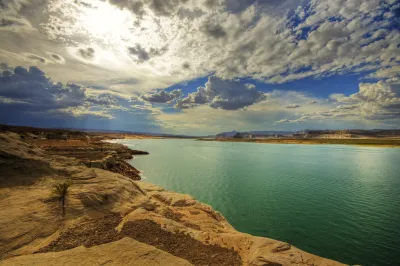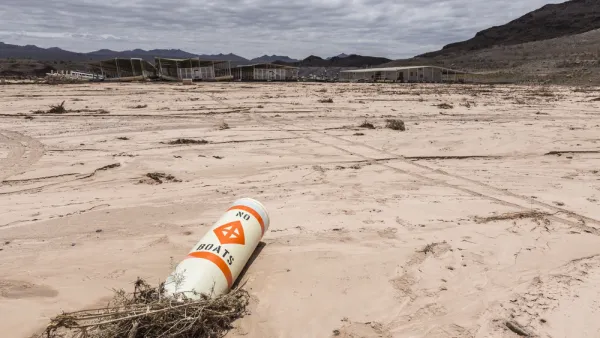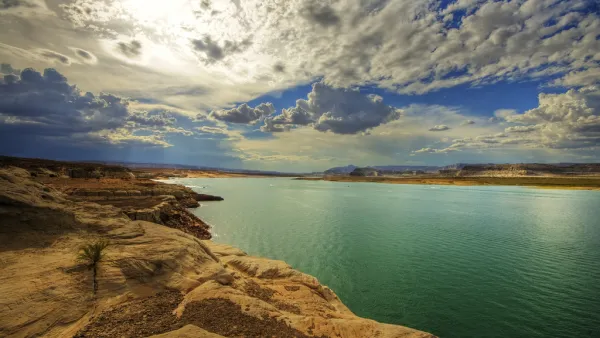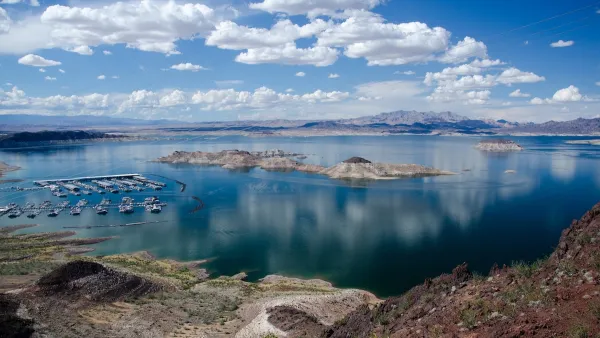Eric Balken makes the case that Lake Powell, anchored in place by the Glen Canyon Dam, is too inefficient a reservoir during times of water scarcity. Lake Mead, he says, is more than up to the task.

Water scarcity in the Colorado River Basin has prompted questions about Lake Powell, which loses up to 390,000 acre-feet of water yearly to seepage. "Nearly everyone agrees that conservation is needed basin-wide, but storing water in Lake Powell, the most wasteful reservoir in the system, isn't about saving water. Upper Basin officials fear that if Lake Powell shrinks too much, the reduced hydropower generation will drastically hike electric rates."
Glen Canyon Dam, completed in 1966, stops up the Colorado River and is the only reason Lake Powell exists. It is a key source of hydroelectric power, but it also enraged a generation of environmentalists by inundating an entire riverine ecosystem.
Balken advocates letting the waters of Lake Powell through the dam to collect in a single reservoir, Lake Mead. "This would mean Glen Canyon would transition from a reservoir destination to a world-class rafting and hiking destination. With low reservoir levels over the past decade, hundreds of miles of river and side canyons have already begun to be restored to their natural beauty." On the flip side, gas-fired plants may have to compensate for the dam's reduced generating capacity.
FULL STORY: It’s time to let Lake Powell go

National Parks Layoffs Will Cause Communities to Lose Billions
Thousands of essential park workers were laid off this week, just before the busy spring break season.

Retro-silient?: America’s First “Eco-burb,” The Woodlands Turns 50
A master-planned community north of Houston offers lessons on green infrastructure and resilient design, but falls short of its founder’s lofty affordability and walkability goals.

Delivering for America Plan Will Downgrade Mail Service in at Least 49.5 Percent of Zip Codes
Republican and Democrat lawmakers criticize the plan for its disproportionate negative impact on rural communities.

Test News Post 1
This is a summary

Test News Headline 46
Test for the image on the front page.

Balancing Bombs and Butterflies: How the National Guard Protects a Rare Species
The National Guard at Fort Indiantown Gap uses GIS technology and land management strategies to balance military training with conservation efforts, ensuring the survival of the rare eastern regal fritillary butterfly.
Urban Design for Planners 1: Software Tools
This six-course series explores essential urban design concepts using open source software and equips planners with the tools they need to participate fully in the urban design process.
Planning for Universal Design
Learn the tools for implementing Universal Design in planning regulations.
EMC Planning Group, Inc.
Planetizen
Planetizen
Mpact (formerly Rail~Volution)
Great Falls Development Authority, Inc.
HUDs Office of Policy Development and Research
NYU Wagner Graduate School of Public Service





























